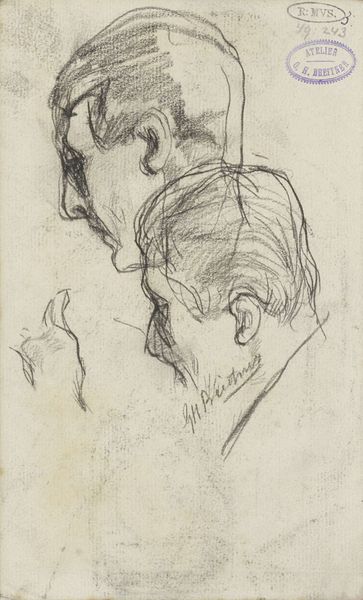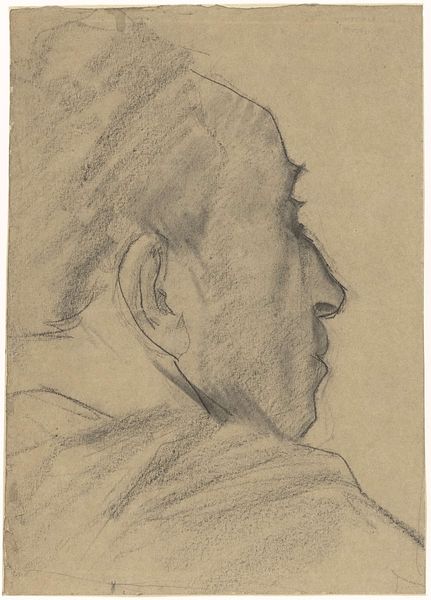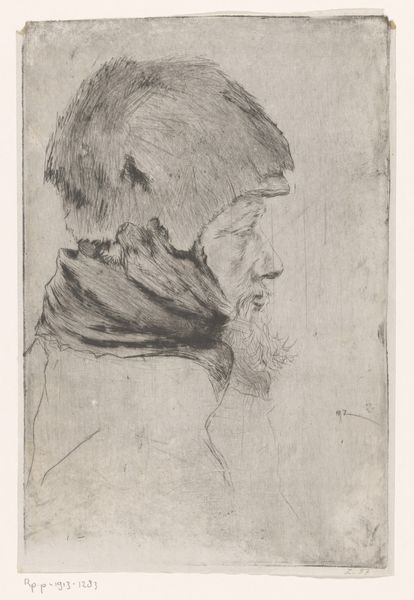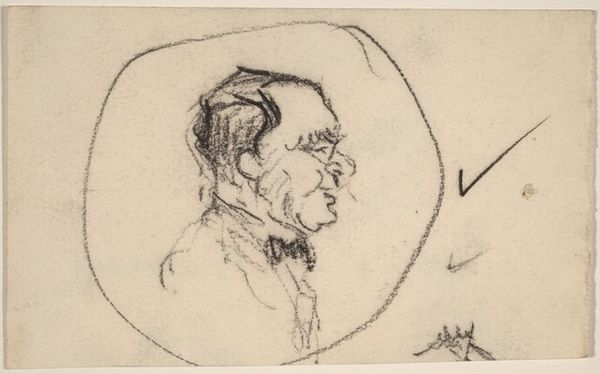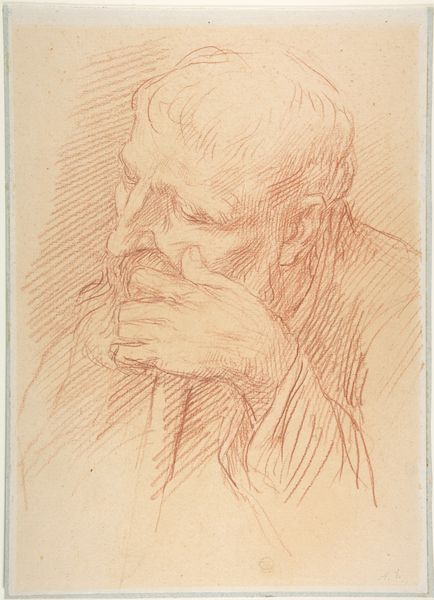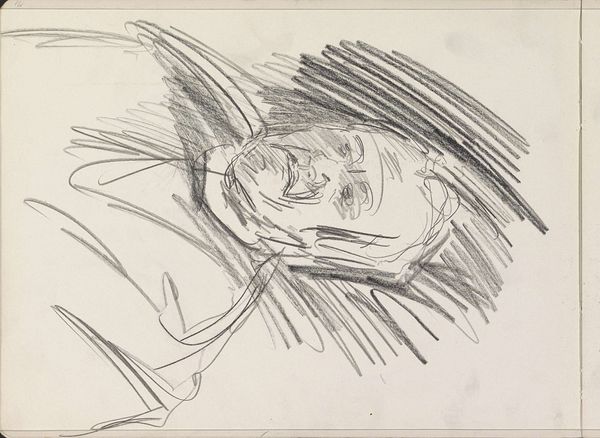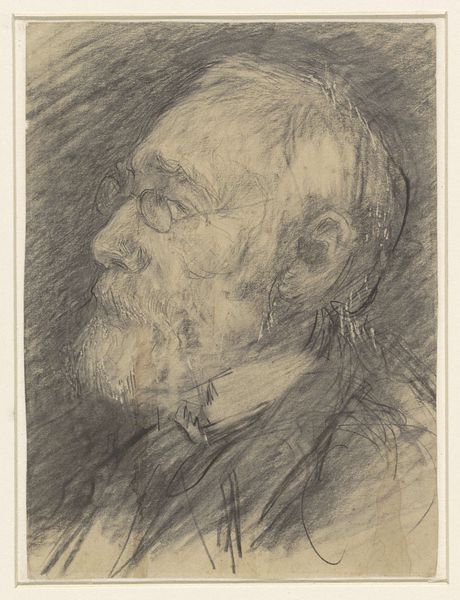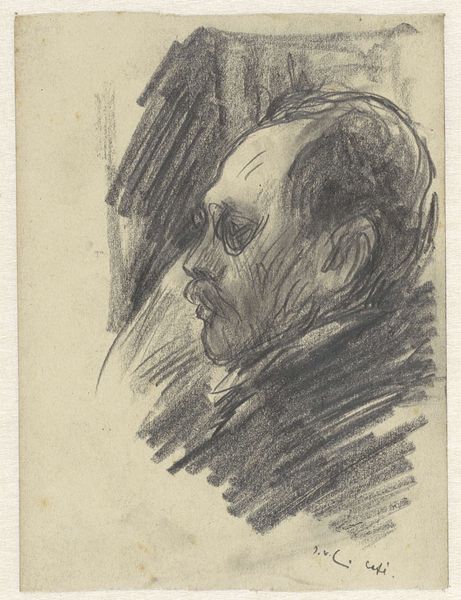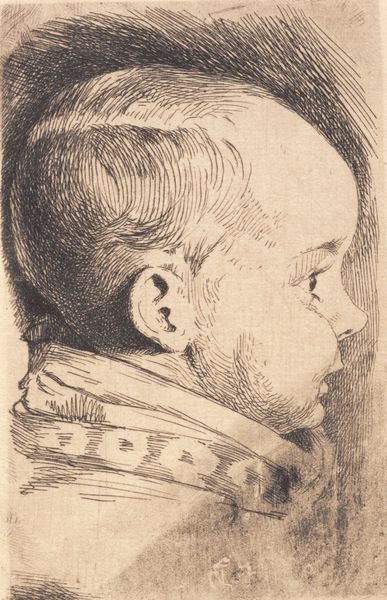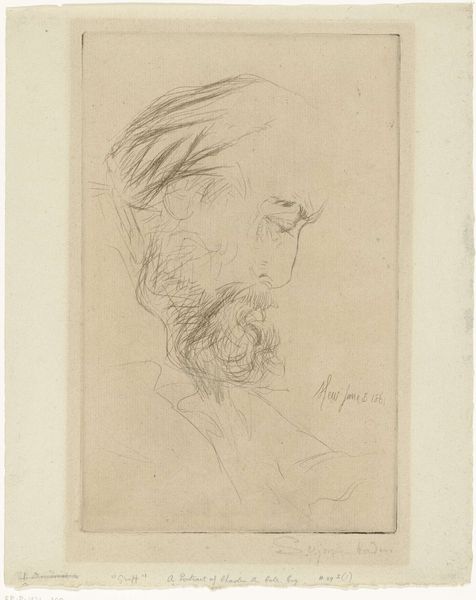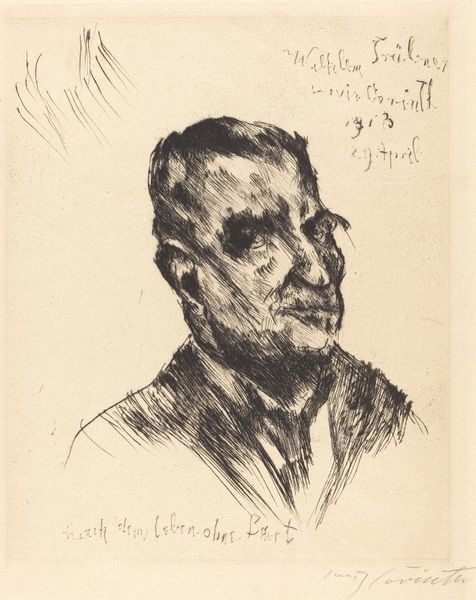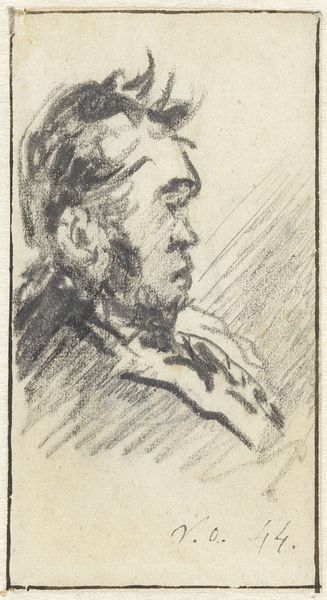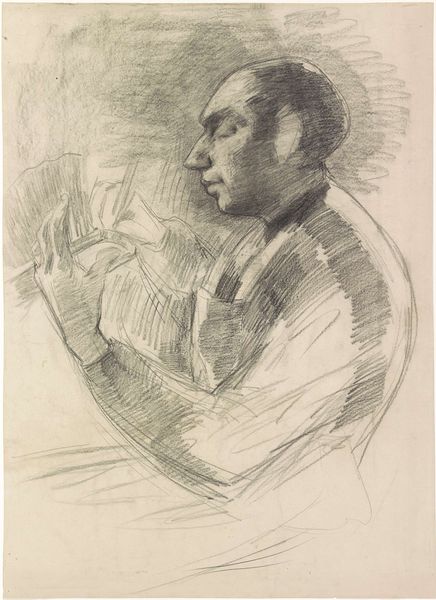
drawing, pencil
#
drawing
#
pencil drawing
#
romanticism
#
pencil
#
portrait drawing
#
realism
Copyright: Public Domain: Artvee
Curator: This is John Linnell's portrait of Thomas Palmer, executed in pencil in 1813. It's quite a direct study. Editor: My immediate sense is weariness, maybe quiet contemplation. The soft, smudged lines of the pencil contribute to that feeling. Curator: Yes, there's an intimacy, a candid quality to the sketch that’s disarming. What interests me is Linnell’s decision to render this as a drawing. What’s he thinking about, using such an unassuming material? Is this intended as a finished piece, or a study? Editor: Perhaps it’s both? The use of pencil lends itself to rapid sketching, capturing a likeness efficiently, but there’s also undeniable skill in the tonal variations he achieves. You can see how he's built up the shadows to define Palmer's features. Maybe it points to the changing status of drawing as a valued medium in itself. Curator: And look at the inscription: "Mr. Palmer by J. Linnell, 1813.” This reinforces its identity as a portrait meant for presentation or record. Linnell's choice of such directness and material modesty raises questions about the role of art within middle-class circles at that time. What purpose did such a piece serve for Palmer? Editor: Well, portraiture has always been linked to ideas of status, lineage, or remembrance. For someone like Palmer, commissioning or receiving such a likeness may be linked to solidifying his place in a burgeoning, modernizing world, while also reflecting the influence of Romantic ideals focused on character and inner experience. The simplicity seems to enhance the sense of sincerity. Curator: And what about the availability of materials? Who had access to fine drawing paper and quality pencils, and what did that signify in early 19th century England? Was this a luxury commodity or a widely accessible tool for self-expression? These practical considerations are crucial for understanding how the work was even possible. Editor: Precisely! It’s about linking the artwork to its time, showing how social factors influenced its creation and its reception. Examining ‘Thomas Palmer’ from different perspectives offers an opportunity to grasp the relationship between an artwork and the circumstances that brought it into being. Curator: Indeed, thinking about Linnell’s intentions alongside the material realities and societal functions illuminates this image more clearly. Thanks for expanding my own considerations here.
Comments
No comments
Be the first to comment and join the conversation on the ultimate creative platform.
